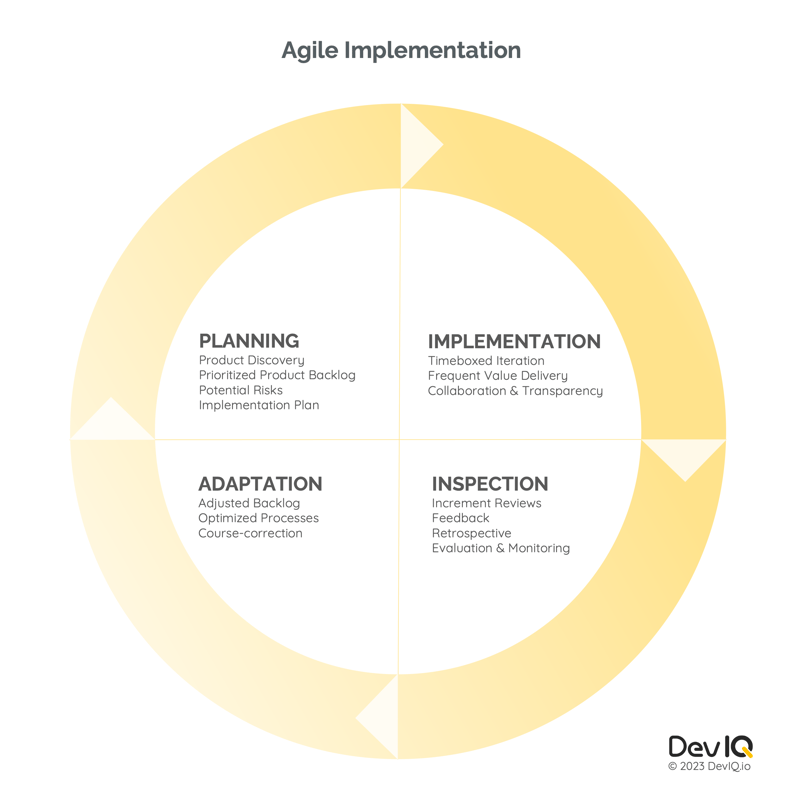Greenfield projects offer a unique opportunity for innovation and creativity, but also pose significant, multifaceted challenges. We've found that an Agile approach, with its dynamic and adaptive framework, can effectively mitigate Greenfield obstacles – and even transform them into opportunities.
Greenfield projects, characterized by their novelty and lack of prior infrastructure, bring unique challenges to project management. Here, we'll explore Greenfield project opportunities and demonstrate, with real-world examples, how Agile project management methodologies can help mitigate inherent challenges.
What is a Greenfield Project?
Imagine a vast, untouched field waiting to be transformed into a thriving garden. This is the essence of a Greenfield project – initiatives that begin from scratch with no pre-existing infrastructure, systems, or historical data. These projects often involve creating new products, services, or systems, representing opportunities to innovate without the constraints of legacy technologies or processes. They also bring unique challenges. Key aspects of project management impacted by Greenfield innovation include:
- Existing Infrastructure: No prior infrastructure
- Project Scope: Completely new
- Risks: Higher uncertainty
- Change Management: Frequent changes
- Resource Allocation: Less predictable
- Stakeholder Management: Complex
Unlocking Potential
Unique Opportunities in Greenfield Projects
Clean Slate
Greenfield projects start with a clean slate without any pre-existing infrastructure, offering a rare opportunity to build from the ground up, ensuring that every component aligns seamlessly with the project's objectives. The absence of legacy systems allows for greater flexibility and creative problem-solving.
Innovation
The novelty of a Greenfield project invites innovation, encouraging teams to think outside the box and implement cutting-edge solutions. The absence of constraints from previous projects enables the team to experiment with novel approaches and technologies. Teams can leverage prototyping to test and iterate on new ideas before committing to a final solution.
Optimized Architecture
While higher risks may initially seem daunting, they offer a unique opportunity to design an optimized architecture, allowing teams to carefully assess potential pitfalls and develop a robust system that both addresses current challenges and applies resilience to future uncertainties. Teams can implement modular designs to create scalable architecture, anticipating future growth and ensuring the system can handle increased loads.
Scalable
Greenfield projects can be designed for high scalability and seamless adaptability to changing requirements and increased workload. Leveraging cloud services for flexible infrastructure and microservices architecture allows the independent scaling of different components.
Customizable
Greenfield projects enable tailored solutions to meet specific requirements. Teams incorporate user feedback throughout development and employ design patterns that facilitate customization without sacrificing system integrity.
Future Proof
Greenfield projects designed with the future in mind are more resilient and adaptable to evolving technologies and requirements. The product, designed with flexible solutions in mind, keeps pace with advancements and business needs through regular updates.
Reduced Technical Debt
The absence of legacy systems reduces the risk of accumulating technical debt, providing an opportunity for a clean and maintainable codebase. A rigorous code review process catches and addresses potential issues early, while prioritizing automated testing helps ensure the codebase's reliability and maintainability over time.
Solving Inherent Challenges
Agile Implementation for Greenfield, with Examples
Greenfield projects offer a unique opportunity for innovation and creativity, but also pose significant, multifaceted challenges. We've found that an Agile approach, with its dynamic and adaptive framework, can effectively mitigate Greenfield obstacles – and even transform them into opportunities.

The Solution: Iterative & Incremental Development
Agile methodologies like Scrum or Kanban are well-suited for Greenfield projects because they emphasize iterative development. Instead of attempting to define all project requirements upfront, agile breaks the project into smaller, manageable pieces called "sprints." Each sprint typically lasts two to four weeks, allowing teams to address uncertainties and risks incrementally. Regular feedback from stakeholders during sprint reviews enables rapid adjustments to the project as new information emerges.
In a recent data integration project inception at DevIQ, our team divided the construction into two phases. Phase 1: Proof of Concept (POC) approach with two-week sprints to confront risks head-on, fostering a culture where failures became steppingstones to rapid learning. Phase 2: Risk-adjusted backlog built on outcomes & learnings from Phase 1. This shift wasn't just strategic but a transformation in mindset. Seeing risks as catalysts for growth rather than obstacles, team ethos was built on adaptability, iteration, and the courage to fail fast and learn faster.
Embracing Agile, Maximizing Greenfield Potential
Agile is a mindset – it's "being agile vs doing agile." This mindset fosters a culture of continuous improvement, collaboration, and responsiveness to change, which is particularly valuable in the unpredictable landscape of Greenfield projects. It can transform potential obstacles into opportunities for growth and innovation, increasing the likelihood of Greenfield project success and delivering valuable outcomes to stakeholders.

